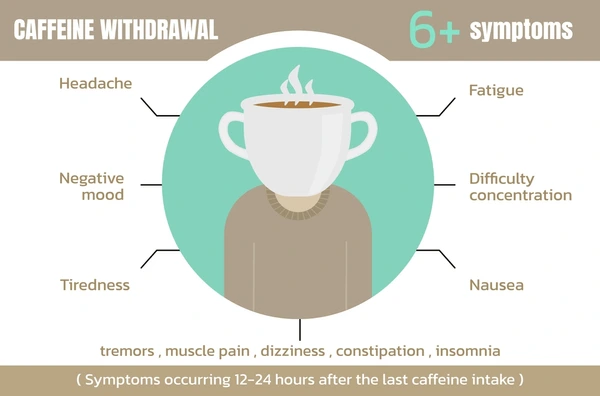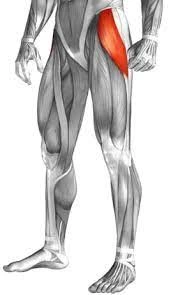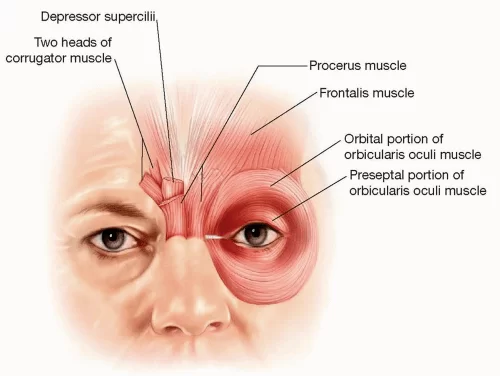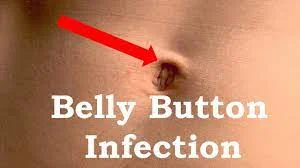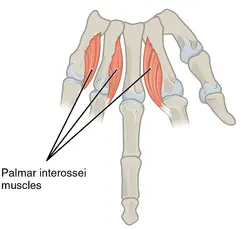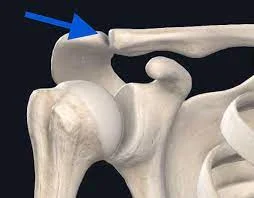Caffeine Withdrawal
What is a Caffeine Withdrawal?
Caffeine withdrawal refers to the set of symptoms that individuals may experience when they abruptly reduce or eliminate their regular caffeine intake. Caffeine is a natural stimulant found in coffee, tea, chocolate, and various energy drinks and medications. It affects the central nervous system, temporarily warding off drowsiness and restoring alertness.
Regular consumption of caffeine can lead to dependence, and when individuals suddenly reduce their intake, the body may react with withdrawal symptoms.
Caffeine comes in several forms, including coffee, tea, soda, and energy drinks, but they all have one thing in common. the caffeine in them may be extremely difficult to quit. If the nicest part of waking up is the amount of caffeine in your cup, it’s time to cut back.
Caffeine is classified as a stimulant. The white bitter chemical, found naturally in over 60 plants, enters your bloodstream via your stomach and small intestine. Caffeine enters your bloodstream and activates your central nervous system (nerves, brain, and spinal cord), making you feel more awake and aware.
If you’re wondering how to quit caffeine (or have tried in the past), you’re probably aware that you could get a headache. This is because your body has become used to consuming caffeine daily.
The goal is to reduce your caffeine intake gradually. Don’t make the mistake of coming to a complete halt. You may most likely suffer withdrawal symptoms like headache, nausea, weariness, muscular discomfort, irritability, and problems concentrating if you do so. You may be tempted to resume drinking coffee or soda, or you may consider taking a headache medicine containing caffeine to alleviate your symptoms. Doing so will restart the dependent cycle. One of the most common reasons individuals continue to use caffeine is to avoid withdrawal symptoms.
This article includes how to reduce caffeine use without developing a headache or other caffeine withdrawal symptoms.
Caffeine’s Effects on Your Body
Caffeine is commonly used to keep us alert and help us concentrate. It can boost your energy and reduce weariness. Furthermore, while caffeine is typically regarded as harmless, eating as low as 300 milligrams per day might raise your chance of undesirable side effects such as
- Nausea.
- Anxiety.
- Sleeplessness.
- Restlessness.
- Caffeine use increases the risk of serious side effects such as neurologic and cardiac disorders, as well as mortality.
What is Caffeine Withdrawal?
Caffeine can affect the levels of neurotransmitters including adenosine and dopamine. Neurotransmitter changes can have an impact on alertness, focus, and mood. Caffeine tolerance can develop in people who use it frequently. Caffeine may even cause some people to acquire a mild physical or behavioral dependency.
Those who stop drinking caffeine quickly may experience unpleasant side effects such as headaches and irritation. This is referred to the doctors as caffeine withdrawal syndrome.
Caffeine withdrawal syndrome can vary in intensity and length from person to person. Symptoms usually develop 12-24 hours after stopping coffee and can persist for up to 9 days.
Symptoms of Caffeine Withdrawal
Caffeine withdrawal symptoms include headaches, anxiety, irritability, and poor energy levels. Reducing your consumption gradually, staying hydrated, and getting adequate sleep can all help.
Caffeine is the world’s most extensively used psychoactive substance.
It works as a central nervous system stimulant, which means it influences neuronal activity in the brain, increasing alertness while decreasing weariness.
If the body gets reliant on caffeine, removing it from the diet can induce withdrawal symptoms, which normally appear 12-24 hours following caffeine withdrawal. Caffeine withdrawal is a recognized medical illness that can affect anyone who takes caffeine regularly.
Here are eight of the most typical indications and symptoms of caffeine withdrawal.
Headache
- Caffeine withdrawal symptoms such as headaches are among the most regularly reported.
Caffeine constricts blood arteries in the brain, slowing blood flow. - According to one research, merely 250 milligrams (less than three cups of coffee) can impair cerebral blood flow by up to 27%.
- Caffeine use is supposed to cause blood vessels to narrow, therefore lowering or stopping consumption allows blood vessels to open up and boosts blood flow to the brain.
- As the brain adjusts to the increased blood flow, the sudden shift in blood flow can cause severe withdrawal headaches that range in length and intensity.
- As the brain adjusts to the increased blood flow, headaches will lessen. However, not all specialists agree on this idea, suggesting that additional study is required.
- Caffeine withdrawal can induce headaches, but it is also used to treat specific forms of headaches, such as migraines. Caffeine, when ingested alone, improves the effectiveness of pain relievers and lowers headache discomfort.
Fatigue
- Many individuals rely on a daily cup of coffee to provide them with energy. Caffeine improves alertness and reduces weariness by inhibiting receptors for adenosine, a neurotransmitter that causes drowsiness.
- Caffeine withdrawal, on the other hand, might have the opposite effect, inducing sleepiness and lethargy. Similarly, individuals who drank caffeine regularly experienced more severe withdrawal symptoms, including weariness, than those who drank it only a few times a week.
- Furthermore, its energizing benefits only last 4 to 6 hours in your system, which may cause you to seek additional cups of coffee or energy drinks throughout the day to stay attentive. This can lead to increased caffeine use and dependency, exacerbating withdrawal symptoms.
Anxiety
- Caffeine is a stimulant with the potential to increase blood pressure and heart rate. Caffeine-sensitive people may feel jittery and nervous after just one cup of coffee. While caffeine use might create anxiety, stopping it can also produce this negative effect.
- Anxiety is a widely reported symptom in persons who stop using caffeine daily.
It can become mentally and physically dependent on the body, creating anxiety. - Furthermore, if you get the majority of your caffeine from soda or sugar-sweetened coffee, the quick drop in sugar can worsen caffeine withdrawal-induced anxiety.
- According to animal research, quickly reducing sugar from the diet after a lengthy time of sugar use might trigger anxiety symptoms.
- Caffeine may become physically and psychologically addictive to the body. When you retreat from it, you may experience nervousness.
Concentration Difficulty
- One of the primary reasons individuals take caffeine in the form of coffee, tea, or energy drinks is to improve focus.
- Caffeinated drinks are frequently drunk before examinations, sporting activities, or presentations to boost attention.
- Caffeine raises adrenaline (also known as epinephrine), a hormone generated by the adrenal glands as part of the body’s normal stress response.
- It also increases the excitatory neurotransmitters dopamine and norepinephrine activity.
- This combination of reactions increases heart rate and blood pressure while also stimulating the brain, resulting in enhanced alertness and attention.
- Caffeine withdrawal might impair concentration since your body is getting used to living without it. Caffeine boosts focus by boosting the levels of specific neurotransmitters and hormones in the brain. Quitting or cutting back might make it harder to focus on certain activities.
Depressed Mood
- Caffeine is widely known for its ability to lift one’s spirits. Its ability to suppress adenosine not only improves alertness but also improves mood.
- One small research examining the short-term benefits of coffee discovered that participants who drank caffeinated coffee showed larger mood improvements after 30 minutes than those who drank decaffeinated coffee.
- Similarly, several studies have linked frequent caffeine use to a lower risk of depression. A major evaluation of research, for example, discovered that persons who drank a lot of coffee had a 24% reduced risk of depression than those who drank less.
- According to a study, the stimulant effects of caffeine can cause emotions of well-being and enhanced activity, which fade after caffeine use is discontinued.
- As a result, if you decide to stop drinking coffee, your mood may suffer.
- Caffeine raises alertness and can improve emotions of well-being. Caffeine withdrawal may result in a sad mood in habitual caffeine users.
Irritation
- Regular coffee consumers frequently experience irritability before their morning coffee.
- This irritable feeling could be caused by the caffeine in coffee.
- Caffeine only remains in the body for around five hours, so after a night of sleep, withdrawal symptoms like irritability can happen.
- Coffee drinkers have become used to the energy boost and mood-enhancing properties of caffeine.
- The weaning process off caffeinated beverages, such as coffee, can make some people frustrated and irritable.
- For heavy coffee drinkers, it could be challenging to reduce their intake without experiencing any detrimental effects on their mood.
- In a study on people with caffeine addiction, 89% of participants said that while they wanted to reduce their intake, their attempts had failed because of withdrawal symptoms including irritation and anger.
- When trying to cut back on coffee, people who are physically or psychologically reliant on the stimulant may get impatient or agitated.
Tremors
- Tremors are one of the less typical signs of caffeine withdrawal in those with a significant caffeine habit.
- Caffeine stimulates the central nervous system, therefore common adverse effects of excessive consumption include nervousness or anxiety as well as shaky hands.
- It’s common advice for people with anxiety problems not to drink coffee to prevent their symptoms from getting worse.
- But stopping coffee abruptly can also cause tremors in those who regularly use high doses of the stimulant.
- Caffeine withdrawal tremors usually start in the hands and go away in two to nine days.
- See a doctor to rule out other explanations if your hand tremors persist for more than nine days. Some persons experience hand tremors due to caffeine withdrawal symptoms as well as excessive caffeine intake.
Low stamina
- Most people who eat or drink anything with caffeine are trying to find a solution to boost their falling energy levels.
- Numerous individuals turn to external energy sources like coffee and energy drinks to replenish their energy levels due to lifestyle issues like inadequate sleep, hard work, and unhealthy diets.
- Caffeinated drinks are frequently taken as a dependency to help people get through the day or make up for lack of sleep.
- Drinking coffee or energy drinks increases blood sugar, heart rate, and concentration, which promotes sensations of physical and mental vitality.
- Caffeine dependence may result from these desired benefits, necessitating increasing amounts of the stimulant to achieve the same level of energy.
Constipation
- It’s normal to experience the opposite effect once you aren’t receiving as much coffee as you’re used to because that morning cup can get you moving in more ways than one.
- Since caffeine has been shown to promote bowel movements, suddenly cutting back on caffeine use can result in constipation. To help you get your system back on track, make sure you consume a diet rich in leafy greens and other foods high in fiber and drink lots of water.
Nausea and vomiting
- Caffeine deficiency can have adverse impacts on the digestive tract. Many individuals are surprised to learn that this is a side effect of caffeine withdrawal. Ginger tea helps soothe upset stomachs.
- For this reason, people who cut back on or give up coffee sometimes complain of having low energy.
- Increased energy, alertness, and concentration are some of the effects of caffeine. Low energy is a common side effect of withdrawal.
How to decrease the symptoms of Caffeine Withdrawal
The duration of caffeine withdrawal symptoms is usually limited to 2 to 9 days, with the peak intensity of symptoms occurring 24 to 51 hours after caffeine is stopped.
Although these symptoms are usually transient, they can cause discomfort and complicate daily activities. Thankfully, there are steps you can take to lessen the likelihood of encountering these unpleasant side effects.
To lessen or prevent the symptoms of caffeine withdrawal, try these suggestions.
- Reduce gradually: because sudden stops might shock the body and aggravate withdrawal symptoms. Caffeine side effects can be less likely to occur by slowly decreasing your intake of it.
- Decrease your intake of caffeinated beverages: If you’re used to drinking coffee at its strongest strength, start with half-decaf and half-regular to gradually wean yourself off of it. Even better, try a decaffeinated herbal tea in place of one of your coffees.
- Remain hydrated: When reducing your caffeine intake, make sure you’re getting enough water. Headache and exhaustion are two withdrawal symptoms that might get worse from dehydration.
- Get enough sleep: Aim for the suggested 7 to 9 hours of sleep per night to help overcome weariness.
- Boost energy naturally: If giving up coffee has left you feeling less energized, consider adding full of nutrients meals, physical activity, and stress-reduction strategies to your daily routine.
Reduce the symptoms of caffeine withdrawal by gradually reducing your intake, drinking enough water, getting enough sleep, and finding alternate energy sources.
Caffeine Addiction
- Four or five cups of coffee, or 400 milligrams of caffeine per day, is the maximum amount of caffeine that healthy adults should consume, according to the Food and Drug Administration (FDA).
- It’s not a huge concern if you have a cup of coffee every morning. But that becomes more of an issue if you drink espressos all day long.
- You should use extra caution when consuming caffeine if you are pregnant. You should keep your daily caffeine intake during pregnancy to 200 mg (including from foods that contain caffeine).
- Additionally, caffeine and other stimulants should be completely avoided by kids and teenagers.
How long has caffeine been in your circulatory system?
- Caffeine starts to take effect as soon as 15 minutes after consumption.
- After about an hour, the amount of caffeine in your blood peaks, and for most individuals, it remains there for several hours.
- Half of the caffeine remains in your body six hours after consumption. You may need up to ten hours to get rid of all caffeine from your system.
Make a review of caffeine.
- Examine how much coffee you now consume before taking any action to stop:
- What amount do you have every day?
- Determine the amount of caffeine in the drinks you consume, then consider areas where you might reduce your intake.
- Many people complain that if they have coffee after 2:00 p.m., they have trouble falling asleep at night.
- Therefore, evaluating how caffeine is influencing and interfering with your daily activities is the main goal of this phase.
- The amount of caffeine in a drink varies depending on the type and brand of beverage
These approximations can help you with your evaluation:
- 140 milligrams in a filtered coffee mug.
- 1 milligram of instant coffee in a mug.
- 80 milligrams of canned energy drink.
- 75 milligrams of black tea in a mug.
- 40 milligrams per soda can.
- 12 milligrams in a decaffeinated coffee mug.
- 9 milligrams in a hot chocolate mug.
In addition, a lot of protein shakes, chocolate-flavored ice cream, pre-workout powders, water flavor enhancers, and even some prescription drugs include caffeine.
It’s not just about what you’re drinking, though. You must read the labels and pay attention to what they’re saying.
Who Should Avoid or Limit Caffeine Consumption?
Caffeine’s negative effects may be more severe in other persons. It’s a good idea to consult with your doctor about whether you should restrict or eliminate your caffeine use. This is especially true for the following groups.
- Pregnant women Should Avoid Caffeine Consumption. Pregnant women eating less than 200 mg does not cause premature birth or miscarriage.
- Breastfeeding women avoid Caffeine Consumption, women taking 200 mg of caffeine per day will most likely not affect their baby while breastfeeding.
- ChildrenCaffeine use in children is discouraged by pediatrics.
- People with certain chronic health conditions should avoid Caffeine Consumption.
- People suffering from anxiety, persistent headaches or migraines, sleep disorders such as insomnia, cardiac concerns such as abnormal heart rhythms and excessive blood pressure, and gastrointestinal issues such as gastroesophageal reflux disease (GERD) and ulcers.
Why is exercise better than Caffeine?
- The study’s findings revealed that both exercise and coffee had a comparable impact.
After 20 minutes on a treadmill and taking a single dose of coffee, participants’ working memory improved similarly. - This may appear to be excellent news for those who prefer a regular triple espresso.
- The study’s key message is that exercise, with all of its long-term advantages, can help enhance mood and concentrate just as much as coffee.
- These findings are all the more relevant in light of caffeine’s adverse effects and withdrawal symptoms.
- The study also discovered that exercise can assist with coffee withdrawal symptoms if a person decides to cut back.
- If patients are experiencing withdrawal symptoms, a short, quick stroll may alleviate some of them.
Exercises for Caffeine withdrawal
It is an essential aspect of maintaining physical and mental wellness.
Whether people engage in low-intensity activities like walking or high-intensity sports like mountain cycling or weight training, regular exercise has several health and mental advantages.
Daily exercise of any degree is vital for avoiding a variety of illnesses and other health difficulties.
Exercise is classified into three types:
- Aerobic Exercise
- Anaerobic Exercise
- Agility training
Aerobic
- There are several sorts of exercise, and they all provide different health and well-being advantages.
- Aerobic exercise seeks to enhance the body’s usage of oxygen. The majority of aerobic exercise is done at moderate intensity for prolonged periods.
- Aerobic exercise mostly involves the usage of major muscular groups.
- Warming up, exercising for at least 20 minutes, and finally cooling down are all part of an aerobic exercise session.
Aerobic exercise has the following advantages:
- Increases lung, heart, and overall muscular strength, and decreases blood pressure.
Enhancing circulation and blood flow in the muscles. - Improves oxygen transfer by increasing red blood cell count.
- lowering the chance of developing diabetes, stroke, and cardiovascular disease (CVD).
Increases the life expectancy and symptoms of those suffering from coronary artery disease. - When performed at high intensity, it stimulates bone formation and lowers the risk of osteoporosis.
- It also improves sleep hygiene and stamina by boosting the body’s capacity to store energy molecules such as fats and carbs inside muscle.
Anaerobic exercise
Anaerobic exercise does not require the utilization of oxygen to produce energy. This sort of workout is used to increase power, strength, and muscular hypertrophy. These are high-intensity activities that should last no more than two minutes. Anaerobic workouts include the following:
- Weightlifting.
- Sprinting.
- Skipping with a rope that is intense and rapid.
- Interval training.
- Isometrics.
- Any quick shot of strong activity.
Agility Training
- Agility training seeks to increase a person’s ability to retain control when changing direction, speeding up, slowing down, and changing speed.
- In tennis, for example, agility training allows a player to maintain control of their court placement by recovering quickly after each hit.
- People who participate in activities that need a lot of positioning, coordination, speed, and balance should do agility training regularly.
- Tennis, American football, hockey, badminton, volleyball, basketball, soccer, martial arts, boxing, and wrestling are some examples of sports that demand agility.
Flexibility and stretching
- Yoga can help people become more flexible and decrease stress. Stretching, muscular conditioning, and balancing training are all included in certain workouts. Yoga is a popular and successful example.
- Yoga exercises help with balance, flexibility, posture, and circulation.
- The technique started thousands of years ago in India and seeks to unite the mind, body, and soul. To attain the same aims, modern yoga employs a combination of meditation, posture, and breathing techniques.
- A yoga instructor may customize a course to meet the needs of each individual.
- A person with arthritis may require mild stretches to enhance mobility and function.
- Someone suffering from depression, on the other hand, may require a greater emphasis on the relaxation and deep breathing aspects of yoga.
Summary
Caffeine is the ultimate headache paradox while it has been demonstrated to effectively cure migraines and tension headaches, it has also been associated with chronic migraines and drug overuse headaches.
Even if you don’t generally experience headaches, reducing or eliminating your regular coffee intake may cause one. If the symptoms of caffeine withdrawal become too difficult to handle, try eliminating it from your diet or consuming it in moderation.
FAQs
How long does caffeine withdrawal last?
Every person’s experience is different, but symptoms often appear 12 to 24 hours after the decrease and can persist for up to nine days.
What can assist with caffeine withdrawal symptoms?
There are techniques to reduce caffeine withdrawal symptoms, such as gradually lowering your caffeine intake and consuming lots of water. To make your caffeine withdrawal effective, use alternative energy-boosting activities, such as physical exercise, to substitute the caffeine.
What is the duration required for caffeine to exit your system?
Caffeine’s effects are felt within 15 minutes. An hour later, the levels in your bloodstream peak and remain there for many hours. Half of the caffeine you take is remained in your body 6 hours later. Caffeine may not leave your bloodstream for up to 10 hours.
How much caffeine is too much?
For most healthy people, caffeine levels of up to 400 milligrams (mg) per day appear to be safe. This equals to approximately four cups of brewed coffee, ten cans of cola, or two energy-shot beverages.The caffeine amount of beverages varies greatly, particularly among energy drinks.
What are the consequences of caffeine withdrawal?
Symptoms vary in intensity from person to person. Still, the most frequent include a headache, fatigue, decreased energy/activity, decreased alertness, sleepiness, decreased contentedness, low mood, difficulties concentrating, impatience, and feeling foggy/not clearheaded.
Can caffeine withdrawal create anxiety?
While caffeine use might create anxiety, avoiding it can also produce this negative effect. Anxiety is a widely reported symptom in persons who stop using caffeine daily. It can become mentally and physically dependent on the body, creating anxiety.
How addictive is caffeine?
Caffeine addiction may develop fast from daily usage, characterized by cravings and withdrawal symptoms if intake is reduced or stopped. However, some people have negative effects from caffeine usage or have difficulties managing without caffeine. Caffeine overdose has occurred on rare occasions.
References
- Rd, J. K. M. (2022, October 28). 8 Symptoms of caffeine withdrawal. Healthline. https://www.healthline.com/nutrition/caffeine-withdrawal-symptoms
- Eske, J. (2023b, June 27). Symptoms of caffeine withdrawal. https://www.medicalnewstoday.com/articles/324768
- Gotter, A. (2023, June 5). When does caffeine withdrawal stop? Healthline. https://www.healthline.com/health/how-long-does-caffeine-withdrawal-last
- Clinic, C. (2023, December 11). How to quit caffeine without a headache. Cleveland Clinic. https://health.clevelandclinic.org/how-to-quit-caffeine
- MSc, E. H. B., MA PhD. (2022, September 14). Caffeine withdrawal symptoms. Verywell Mind. https://www.verywellmind.com/what-to-expect-from-caffeine-withdrawal-21844

